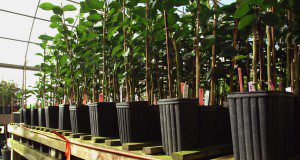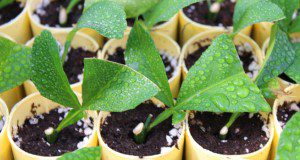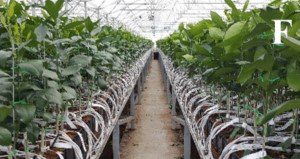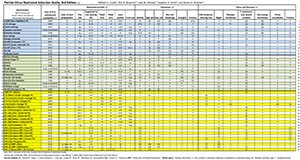This updated 4th edition of the Florida Citrus Rootstock Selection Guide (FLCRSG) is a revision of the 2016 publication. The guide is a convenient, easy-to-use reference to 21 characteristics of 49 rootstocks. Of those, 12 are time-honored commercial rootstocks (highlighted in blue), which are the most reliably characterized. The next 13 rootstocks are minor commercial ones (highlighted in green) that are less frequently used today in Florida but may have been prominent at one time. The third group consists of the most recently released 24 rootstocks (highlighted in yellow) for which there is limited commercial experience. The new addition includes three new USDA rootstocks and updates information on a few traits. Written by William S. Castle, Kim D. Bowman, Jude W. Grosser, Rhuanito Soranz Ferrarezi, Stephen H. Futch, and Steve Rogers, and published by the UF/IFAS Horticultural Sciences Department.
https://edis.ifas.ufl.edu/hs1260
Tag: Citrus Rootstocks
Rootstock Selection
The large number of different rootstock varieties currently available for citrus production in Florida is unprecedented. This new 4-page article, chapter 4 of the forthcoming UF/IFAS Citrus Nursery Production Guide, provides information on rootstock uses in Florida, rootstock propagation, and the impact of tissue culture, as well as factors to consider when deciding which rootstock to plant. Written by Ute Albrecht, Manjul Dutt, and Jude Grosser and published by the UF/IFAS Horticultural Sciences Department.
https://edis.ifas.ufl.edu/hs1340
Citrus Rootstock Propagation: Traditional Techniques and Recent Advances
Commercially grown citrus trees are usually composed of two parts: 1) the scion, which is the aboveground portion of the tree that produces the fruit, and 2) the rootstock, which comprises the root system and the lower portion of the trunk. This new 4-page publication, chapter 6 of the forthcoming Citrus Nursery Production Guide, discusses three kinds of rootstock propagation: seed, cuttings, and tissue culture. Written by Ute Albrecht, Lorenzo Rossi, and Mongi Zekri and published by the UF/IFAS Horticultural Sciences Department.
https://edis.ifas.ufl.edu/hs1329
Stock Plant and Tree Production: Irrigation and Fertilization
Citrus tree production in nurseries can be divided into three stages: production of rootstock liners, transplant of rootstocks into larger containers, and bud grafting. The objectives of this new 6-page publication of the UF/IFAS Horticultural Sciences Department are to provide general information on irrigation and fertilization for production of citrus nursery trees in seedbeds, nurseries and budwood multiplication blocks. This article, written by Rhuanito Soranz Ferrarezi, is chapter 8b of the forthcoming Citrus Nursery Production Guide.
https://edis.ifas.ufl.edu/hs1333
Florida Citrus Rootstock Selection Guide, 3rd Edition
Information about citrus rootstocks has become an important part of understanding and managing citrus greening (Huanglongbing or HLB). This selection guide covers 20 characteristics of 45 citrus rootstocks and explains its methodology in detail. This 3-page fact sheet was written by William S. Castle, Kim D. Bowman, Jude W. Grosser, Stephen H. Futch, and James H. Graham and published by the UF Department of Horticultural Sciences, May 2015.
http://edis.ifas.ufl.edu/hs1260




